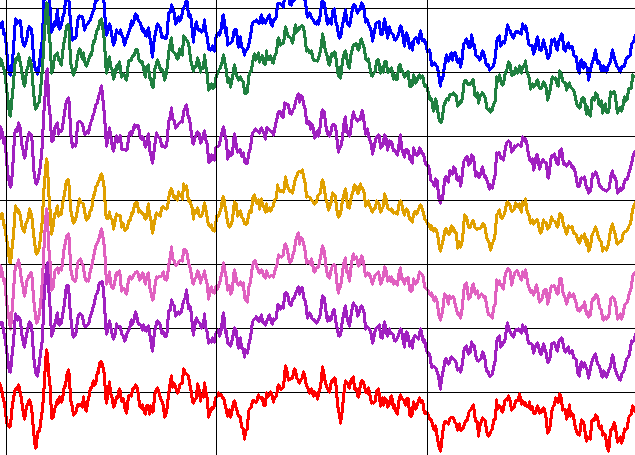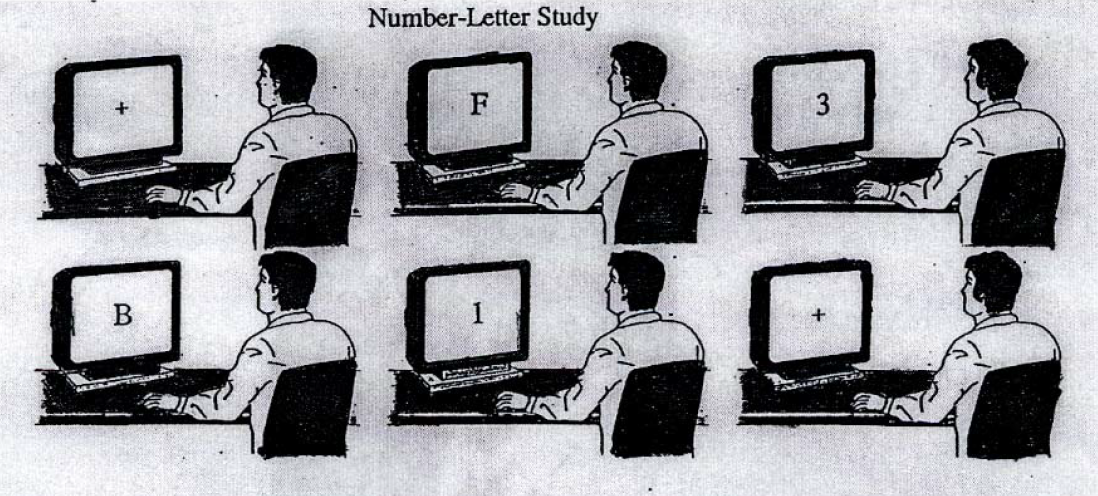Evoked brain potentials
Our research studies evoked brain potentials in visual information processing, including several specific brain potentials which indicate different cognitive events.
These events include noticing that a stimulus is relevant to a task, partial and complete classification of a visual stimulus, storage of a visual stimulus in working memory, and comparing a visual stimulus to one just remembered. The bioelectrical potentials (electroencephalographic) common to everybody are recorded while the subject is seated, perceiving simple visual displays, and completing very simple tasks based on the stimuli. Using statistical procedures, the bioelectrical phenomena are related to the stimulus elements in the task performance, those which are relevant, those which are irrelevant, those which must be remembered, and those which must be compared.
Small disc electrodes are placed on various parts of the head by application of electrode jelly (a salt paste). These electrodes are sometimes part of a cloth cap, similar to a bathing cap. The electrodes are used to monitor the minute electrical activity emanating from the brain of the subject. We are studying these brain potentials in senior people; however, we are interested in all healthy subjects, including those who, for any reason, feel that their cognitive processes or memory are impaired due to Alzheimer's disease, mild cognitive disorder, or age associated memory impairment.


Visual information processing
Our research subjects complete simple visual processing tasks while their brain activity is being recorded.
For the main task, the subjects are seated in a soundproof booth in front of a computer monitor. On the screen, they see a sequence of stimuli flashed less than a second apart; each trial consists of 2 letters and 2 numbers displayed one at a time in random order. For each trial, the subjects are asked to compare either the two numbers or two letters and indicate whether they are in numerical or alphabetical order or are the same number/letter. There are two experimental periods of about 25 minutes each.
Upon completing two experimental sessions of the main task, there is a second task where the subjects are presented with common words and asked to rate connotative meaning of these words along three different dimensions.
After recording the brain activity during each of these tasks, computer analyses study when the experimental stimuli are viewed, stored in memory, and compared. Participants are also administered a battery of standard pen and paper neuropsychological tests in a separate study session.